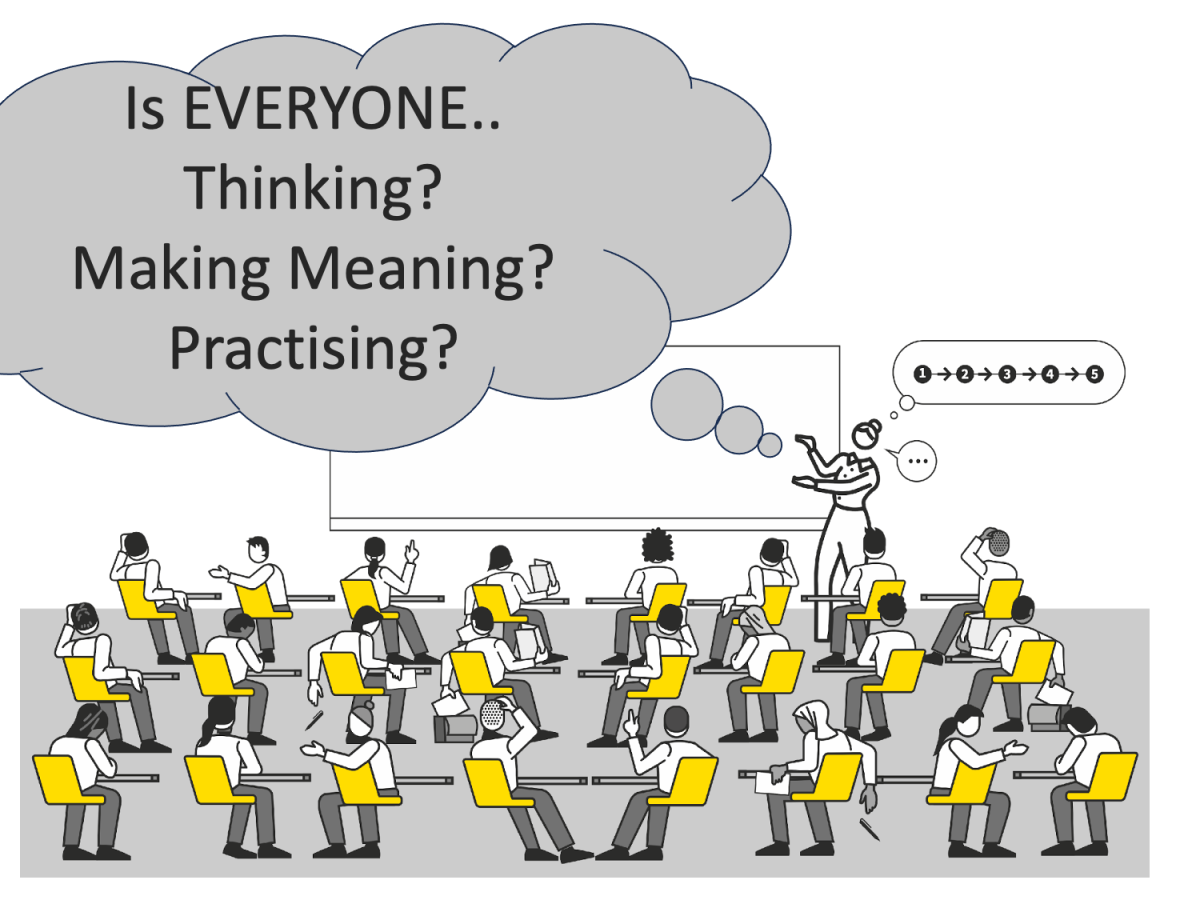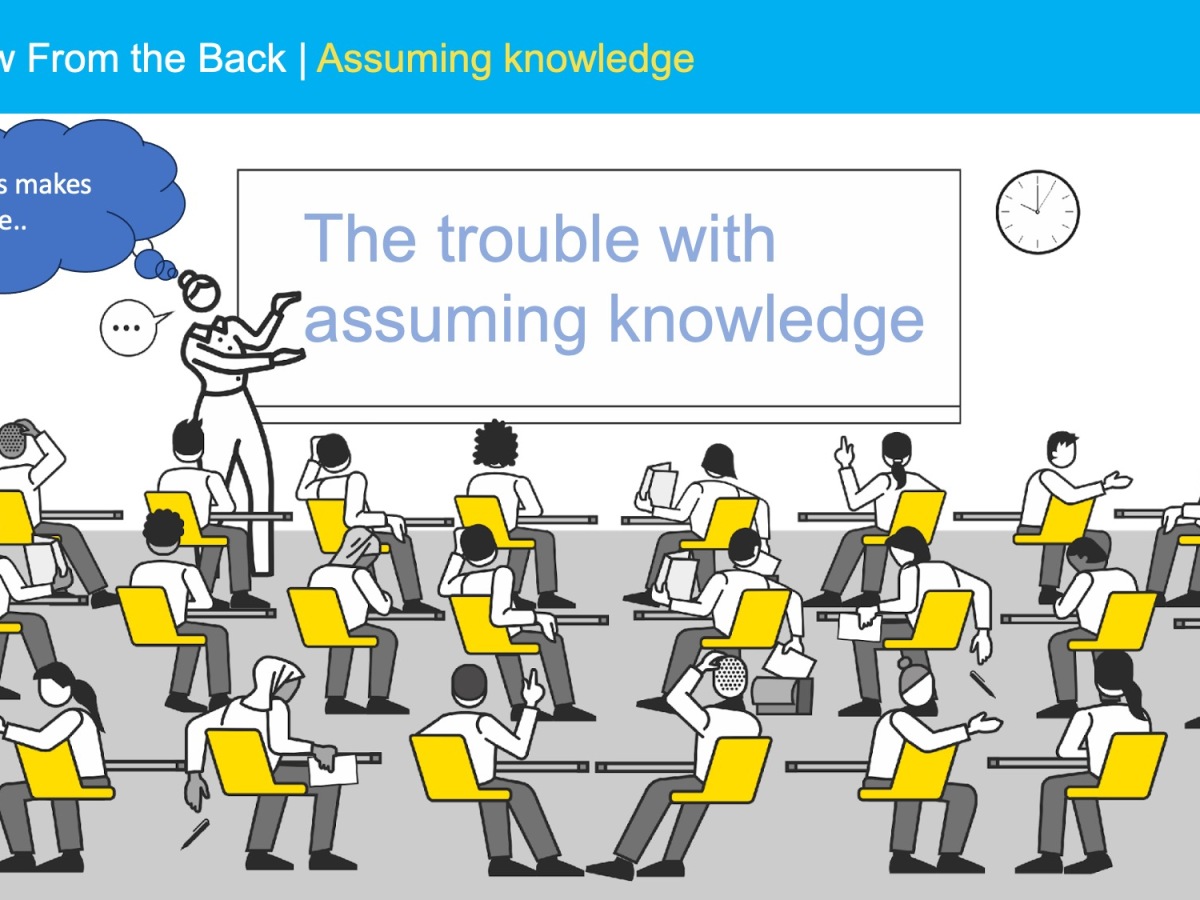
Pic via Holli Smith @hsmith1902
Earlier this week, John Tomsett, Mary Myatt and I hosted an event at the Regent Hall on Oxford Street. 200 people gathered for a celebration of curriculum thinking and an exploration of the way ahead – based on our work with schools and discussions with teachers and leaders, much of which John and Mary have capture in their incredible Huh! series. Thanks to everyone who came! And thanks to Alex at John Catt who supported us to include a book with every ticket:

The slides from our three keynotes can be accessed here – click image. Each one features five key take-aways- actions for people to take.

My Talk:
Most of my work is now with schools looking to embed and enact their curriculum intentions. I encounter schools where they have done superb work in thinking about curriculum sequencing and content, with plenty of ambition. The challenge is to put plans into action. I’m still a big fan of the idea of ‘knowledge rich’ because it makes us think about what exactly we want children to know. Recently I’ve become a little alarmed by the threat of a swing against this idea (something I’ll explore further elsewhere) and I’m always keen to remind people of the beautifully intelligent synthesis achieved in Martin Robinson’s Trivium 21c – that goal of wisdom, through grammar, dialectic and rhetoric.

Schools like Turton in Bolton who share their ideas freely on their websites, show us how much thought has gone into every aspect of curriculum design - the selection of texts, enquiry questions in history and all the links that are possible between subjects. But, now, without doubt, the wave of ‘intent’ discussion from 2017-2019 has turned into a preoccupation with implementation, including the need for quality resources.

Here, the development of high quality materials is something to celebrate. I gave shout-outs to the Counsell/Mastin Opening Worlds materials, the Didau/OAT English curriculum, the Boxer/Carousel online retrieval practice tool and the brilliant Complete Mathematics resource. Really, there’s no excuse these days to be using sub-standard curriculum material when there are so many sources of the good stuff – free or highly affordable. . Teachers and leaders need to invest time in engaging with their subject communities to keep abreast of what’s available, making sure theirs is as good as anyone’s.

A big discussion in schools – especially in MATs – is about the tradeoffs between teacher automony and the provision of centrally planned resources. Either way you need to achieve maximum quality plus maximum teacher knowledge of how to use materials adaptively. Autonomy can lead to isolation that drifts into low quality and workload excess with everyone reinventing the wheel; central planning can cut corners on teacher understanding and ownership – leading to weak delivery and poor responsiveness. Where schools seem to get it right, teachers are given routine time in the annual CPD/meeting cycle to engage with materials, to co-plan and to discuss the nuances.
The rest of the talk took my five key ideas for action in turn.
Idea 1: Review lessons from the lens of ‘all’.
Some of this is captured in the slides above. The work Sarah Cottinghatt has done to amplify Ausubel’s ideas is superb. We need all student to ‘make meaning’ – to make sense of ideas in their own schema. All of them. Not just some. This has major implications for running a room and all our ideas about responsive teaching - we have to involve all students, giving them time to think, to practise and make meaning. We need to engage with that to see how they’re doing:
Three Checks: For teachers and observers.
As I explored in a previous blog post, it can be useful to condense the complexity of teaching down to just a few key ideas. Here’s what I came…
The View From The Back: The trouble with assuming knowledge.
A series of short posts, focusing on the challenges of teaching all students successfully, informed by lesson observations Imagine being in a lesson where the discussion around you is…
Idea 2: .Plan more scaffolds and more consolidation to support access to lessons.

My many observations of lessons tell me that scaffolding needs more thought. We want to build confidence and a high success rate- but you don’t want to over scaffold for students who don’t need it. So, scaffolds need to be designed so they can be put in place responsively, spontaneously or in a planned way – and then removed. Step 1: Succeed with help; Step 2: succeed with less help; Step 3: Try on your own. My examples included the D&T perspective drawing sequence and the horror of the blank page to many students. (With a nod to Pippa Busch “don’t blank page them”).

Other examples were around scaffolds for discussions, for talk for writing, for checking for understanding and practising explaining, vocab development and structures for essay writing. I think scaffold design needs more attention in curriculum design – and it needs flexible application, not the same for everyone.
Idea 3: Switch from Powerpoint to Reading a Text

I’ve explored this elsewhere but here I was emphasising the difference you see between schools that explicitly plan for reading and those that don’t. In some schools reading drives the curriculum – the texts are planned and embedded in the schemes of work; teachers are trained in techniques like echo reading. Elsewhere it’s a thin diet with the majority of content presented via the small screen at the front in bullet points.
Five Ways To: Weave Reading into the Curriculum
In my travels to various schools, one of the variables that I’m struck by is the emphasis placed on reading. I included this description…
Idea 4 Plan for more Mode B teaching:

There are so many opportunities for excellent ‘mode B teaching ‘ – as covered extensively in Walkthrus and Learning Rainforest. These modes of learning are important – they deepen and extend learning, offer degrees of freedom to teachers and students that everyone values and also support student agency, breadth of experience, and fuel the general joyfulness of any learning process. In my talk I recounted some examples including a lovely Year 1 ‘Weekend News’ session with children standing in front the class to tell them exciting things that happened at the weekend – and the ‘exit point’ presentations from a Year 5 IPC unit on Greeks and Romans: children telling the invited guests about what they’d learned…. hearing a young boy explaining how roads were built was a beautiful moment. We cut out the Mode B at our peril. If you think of them as soft options, you’re doing it wrong!
Idea 5 Explore National Baccalaureate Accreditation.

Our current system doesn’t officially allow us to give formal recognition to the full range of learning that students engage in… be we can if we choose. Rather than hang about for years waiting for a policy to emerge and be rolled out, schools are already joining this movement, setting up their own Bacc models. You can find out more here. It works really well at KS2 and KS3 where there is a lot of freedom and few other ways to recognise learning across the curriculum. At KS4 and KS5 it allows you to put exams in wider framework, giving more balance to the outcomes you celebrate.
Thanks again to everyone who has welcomed me into their schools, to everyone attending this event and of course to John and Mary for their friendship, wisdom and enthusiasm for this work. The Huh series is a ‘must-have’- check them out amongst this impressive John Catt curriculum range: https://www.johncattbookshop.com/collections/the-curriculum-teachers




